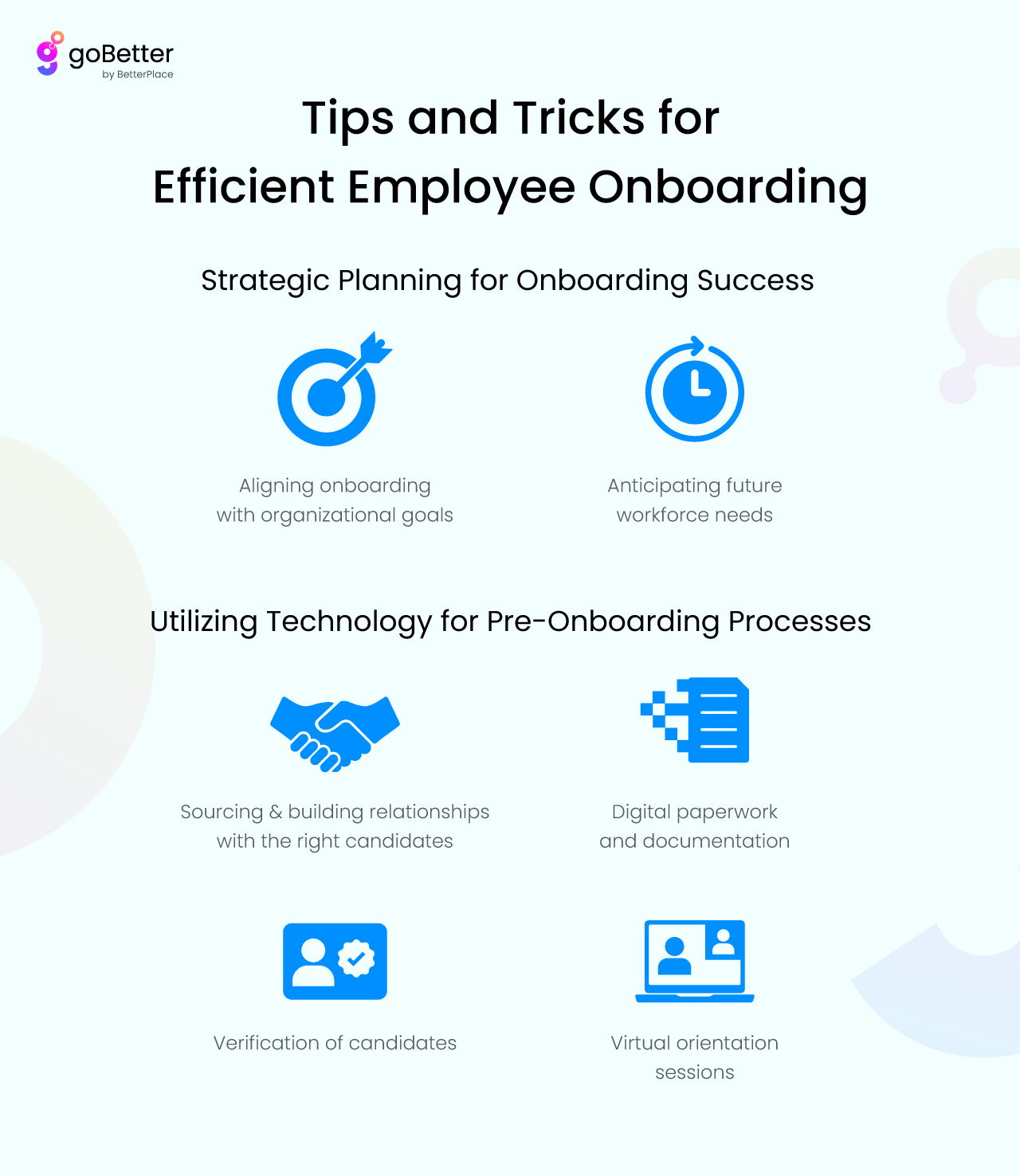Struggling with retaining top talent and not being able to figure out why?
Maybe you are not looking at the right place! The problem could just be your first impression.
A study by Brandon Hall Group states that a good employee onboarding process can help organizations improve employee retention by 82%. If you don’t fix your onboarding in 2024, you might continue to struggle with retention.
Employee onboarding is a crucial component for organizational success, setting the tone for an employee’s entire tenure with a company. The landscape of the workplace, especially the frontline, is continuously evolving.
In this blog, we will explore the importance of employee onboarding, delve into the changing dynamics of the frontline workforce, and provide a comprehensive guide to best practices for onboarding in 2024.
What is the Importance of Employee Onboarding?
Having an effective employee onboarding is not just a checklist of tasks—it’s a process to establish a strong foundation between employers and employees from the beginning.
It is a strategic process that boosts employee retention, satisfaction, and overall organizational success in the long term.
With the fear of the Great Resignation still looming for the past two years, organizations have started to realize that poor onboarding can leave the employee in a confused or unhappy state, ultimately leading to her quitting the job, much before the organization starts to get an ROI from their people’s investment.
Employee onboarding used to be a group activity; however, with an increasing number of remote employees, it is slowly becoming an isolating experience. Hence, virtual staff onboarding is gaining popularity. Organizations are looking at new ways to drive engagement with virtual lunches, digital water-coolers, and other group activities.
For the new hires, the onboarding process is a personalized, transparent, and welcoming experience to speed up integration into their new roles, boost motivation, build trust within colleagues and managers, and increase job satisfaction. It helps them connect with the company’s culture and hit the ground running. Effective onboarding also sets expectations of the job role and helps new hires understand the organization’s goals and ethics.
In fact, managers who spend time during the employee onboarding process benefit from satisfied employees’ focus on driving organizational success. This can help new employees form connections with existing employees, understand company values, and excel in their careers.
The Evolving Landscape of the Frontline in 2024
In the evolving landscape of frontline onboarding in 2024, challenges arise primarily due to the decentralized nature of the frontline workforce. Unlike on-site or remote employees, frontline teams face unique obstacles in the onboarding process. One major hurdle is the reliance on individual managers at each location to execute onboarding, leading to variability in the quality of the process.
Fast-paced environments, characteristic of industries like hospitality and manufacturing, contribute to the challenge, with high turnover rates and urgent demands often shortening the onboarding procedure.
Additionally, adequate tools, such as limited access to desktop computers, result in more legal compliance rather than a comprehensive onboarding experience that fosters a connection to the organizational culture, values, and vision.
Moreover, a hybrid work environment beckons the need for an onboarding strategy for the new era and retooling your HR stack to be able to deliver a smooth onboarding to your employees. Whether you have a fully remote or a hybrid work schedule, staying on top of employee onboarding trends and best practices will ensure you overcome low employee turnover, high employee engagement, and productivity.
Tips and Tricks for Efficient Employee Onboarding
- Strategic Planning for Onboarding Success
As an HR manager, do you still feel that just handing out welcome kits is enough to greet new recruits and start their new journey? Are they enough to showcase your company’s values and ethics?Aligning onboarding with organizational goals
Successful onboarding goes beyond simply acquainting employees with their roles. It involves aligning and simplifying the onboarding process with the broader goals and values of the organization. By integrating organizational culture into onboarding, employees are more likely to feel connected and motivated.
Anticipating future workforce needs
As the workforce landscape continues to evolve, your onboarding strategy needs to be future-proof. For instance, before COVID, nobody could think of having a majority of the workforce working from home, and hence no HR manager anticipated building a virtual onboarding process. When you plan your onboarding strategy, look at key trends shaping the workforce of the future. Gen Z expects their organizations to offer a personalized and engaging onboarding experience that helps them do their job better. Build a forward-thinking onboarding strategy that caters to future workforce needs. - Utilizing Technology for Pre-Onboarding Processes
With the help of technology, businesses can transform how they manage their onboarding processes. HR departments can leverage technological advancements by digitizing the staff onboarding procedure from hiring to onboarding and finally verifying candidates. Following are some initiatives for digitizing pre-onboarding processes:Sourcing & building relationships with the right candidates
Frontline hiring is characterized by high volumes, and sourcing candidates from multiple apps, platforms, etc., becomes a hassle. Hiring managers juggle between different screens to find the right candidate and nurture a relationship with them throughout their hiring process. Platforms such as goBetter bring disparate sources and vendors on one dashboard, making it easy to manage the pre-onboarding process digitally.Digital paperwork and documentation
Leveraging an online platform where employees can complete all necessary paperwork, access company policies, and communicate with their new colleagues and mentors helps in speedy onboarding. Employees can acquire the required information faster and more efficiently to streamline onboarding. With goBetter, HR teams can automatically generate offer letters, bulk collect documents, and keep track of the onboarding progress without calling the employee again. Embracing technology to streamline administrative tasks is crucial for an efficient onboarding process. Digital paperwork and documentation also reduce the risk of errors and accelerate the onboarding timeline, allowing new hires to focus on integration rather than paperwork.Verification of candidates
A crucial piece in the onboarding process is the verification of shortlisted candidates. Technology can help in verifying hundreds of candidates across key parameters and flag high-risk profiles instantaneously.Virtual orientation sessions
Virtual orientation sessions have become essential as businesses have started to rely on remote and hybrid work models. These sessions provide a comprehensive overview of the organization, its values, and expectations, ensuring remote employees feel connected and informed from the beginning.goBetter by BetterPlace Request for Onboarding Demo
Thank you for Signing Up 
Thank you for Signing Up 

How to Design a Comprehensive Onboarding Program
- Customizing Employee Onboarding for Diverse Roles
If too many employees resign from your organization, it can be due to poor and generic onboarding experience. We need to acknowledge that different roles have unique requirements, and personalizing the onboarding experience for different roles and seniority is essential for successful employee onboarding.Tailoring programs for different departments
Tailoring employee onboarding programs for specific departments is crucial. This ensures that employees receive relevant information and training, setting them up for success in their roles. Involving departmental heads or managers to present during the onboarding can help an employee connect instantly with her team.Addressing the needs of remote and hybrid employees
With remote and hybrid work becoming the norm, onboarding programs must adapt to meet the needs of employees working from different locations. This includes virtual training, digital collaboration tools, and clear communication strategies. Get e-signatures from all your remote employees for all the necessary documents, such as offer letters, codes of conduct, letters of intent, etc. Where possible, organize lunch and learn sessions, meet and greet with team members, etc., to develop belongingness with the organization. - Incorporating a Mentorship Program
A mentorship program is critical for the growth of any new employee joining the organization. It should be customized per the experience and job role, addressing the employee’s unique responsibilities and needs. This ensures that all the new joiners get the required training and information relevant to their day-to-day tasks.Pairing new hires with experienced employees
A mentorship program helps HR managers integrate new hires into the organizational culture and values. For imparting the knowledge, pairing new joiners with experienced employees provides a support system and facilitates a smoother transition into their roles. This is often referred to as the Buddy program in some companies.Fostering a sense of community and belonging
Beyond practical guidance, mentorship programs contribute to a sense of community and belonging. It helps you feel connected to colleagues from the start, enhancing job satisfaction and reducing the likelihood of turnover.Customized learning paths
Recognizing that each employee brings a unique skill set, a successful onboarding program should offer customized learning paths. This accelerates the learning process and ensures employees receive training aligning with their strengths and weaknesses.. - Paperless Onboarding Solutions
HR managers should not have to waste their valuable time and energy doing the same repetitive task. Instead, HR managers can boost efficiency by automating workflows, scaling processes, and consolidating important information. For each step of the onboarding process, you should have readily available design templates to smoothly and quickly complete the onboarding and focus on more critical tasks.E-signatures and digital documentation
The transition to paperless onboarding solutions, including e-signatures and digital documentation, aligns with environmental sustainability and significantly reduces administrative burdens. Leading to faster onboarding and a more positive experience for new hires.Automating administrative tasks for efficiency
Automating routine administrative tasks, such as form submissions, allows HR teams to focus on more strategic aspects of onboarding. This enhances efficiency and minimizes the risk of errors associated with manual data entry. - Integrating Onboarding Software with HR Systems
Integrating onboarding software with your HR systems helps you seamlessly transfer all the relevant information and documents across different teams. This ensures employee information security, reduces the chances of miscommunication between different teams, and helps you onboard many employees in one go.Seamless data transfer and updates
Integration between onboarding software and HR systems is essential for seamless data transfer and updates, allowing you to onboard effortlessly, especially when doing mass hiring. This ensures that all relevant departments have real-time access to employee information, reducing redundancy and improving accuracy.Enhancing communication between departments
Effective communication between departments is critical during the onboarding process. Integration with HR systems facilitates better coordination, enabling a smooth transition from the recruitment phase to onboarding and beyond.

Navigating the Future of Employee Onboarding
For onboarding your employees, it is critical to streamline your processes, enhancing accessibility, communication, and engagement. Along with that, it helps remote employees form personal connections.
To make this happen, in 2024, organizations will plan for a strategic and technologically advanced approach to employee onboarding. Organizations can create a robust onboarding process by aligning onboarding with organizational goals, utilizing technology for efficiency, customizing programs for diverse roles, and incorporating mentorship and paperless solutions such as goBetter.
This contributes to employee satisfaction and retention and positions the organization for success in an ever-evolving workplace landscape. A well-designed onboarding process remains a cornerstone of a thriving and engaged workforce as we navigate the future.




